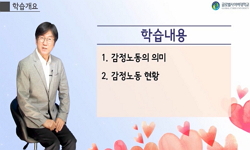The 20th century philosophical anthropology has created many kinds of disciplined human beings who have placed them at the center of the world. The human being at the center of the world sought to answer questions and responsibilities for the world an...
http://chineseinput.net/에서 pinyin(병음)방식으로 중국어를 변환할 수 있습니다.
변환된 중국어를 복사하여 사용하시면 됩니다.
- 中文 을 입력하시려면 zhongwen을 입력하시고 space를누르시면됩니다.
- 北京 을 입력하시려면 beijing을 입력하시고 space를 누르시면 됩니다.
https://www.riss.kr/link?id=A106475720
-
저자
이용호 (서울신학대학교)

- 발행기관
- 학술지명
- 권호사항
-
발행연도
2019
-
작성언어
Korean
-
주제어
인간론 ; 인간의 심장/마음 ; 신체 ; 감정 ; 인간 이해력 ; Human Mind ; Human Beings ; Human Body ; Comprehensive Understanding Of Human
-
등재정보
KCI등재후보
-
자료형태
학술저널
-
수록면
269-300(32쪽)
-
KCI 피인용횟수
0
- DOI식별코드
- 제공처
-
0
상세조회 -
0
다운로드
부가정보
다국어 초록 (Multilingual Abstract)
In studying the human mind, this paper also looked at first what the synthesis of human body and mind means. It was then studied to what extent the human mind controlled the human being. Finally, this paper sought to approach the comprehensive understanding of human beings in the Old Testament by searching how the human mind is expressed toward humans or towards God.
The 20th century philosophical anthropology has created many kinds of disciplined human beings who have placed them at the center of the world. The human being at the center of the world sought to answer questions and responsibilities for the world and animals in areas such as biology, psychology, sociology and history. But in the 21st century, through the question of "Is Man History?" anthropology changed from human understanding as the center of the world to human understanding along with the world. With these changes, the theory of humanism in the Old Testament developed in two directions. On the one hand, when it comes to how human actions against individuals and society react within different cultures, on the other hand it is about how humans are made up. In other words, humans are made up of parts that are physical (body and internal organs) and mental (thoughts, wishes, memories, sorrows and feelings). But furthermore, "how do these two parts react to each other?“ In the ancient world, especially in the ancient Near East and Old Testament, there was a comprehensive human understanding that understood these two parts as one. Anthropology in the Old Testament was universally dominated by the study of H. W. Wolf, but it only reached the general expression of the Old Testament, and did not lead to the study of specific associations. Then, in the 21st century, many studies focused on the latter direction in Western Europe were done, especially on the "human mind" rather than on other internal organs. Because the mind was presented as the central organ that controls human behavior and the inner world from the ancient world to the present.
In studying the human mind, this paper also looked at first what the synthesis of human body and mind means. It was then studied to what extent the human mind controlled the human being. Finally, this paper sought to approach the comprehensive understanding of human beings in the Old Testament by searching how the human mind is expressed toward humans or towards God.
국문 초록 (Abstract)
이 논문도 인간의 마음을 연구함에 있어서, 우선 인간의 신체와 정신의 종합화가 무엇을 의미하는지 살펴보았다. 그런 후에 인간의 마음이 인간을 어느 정도까지 조절하고 있는지 검토하였다. 마지막으로 인간의 마음이 인간을 향해 또는 하나님을 향해 어떻게 표현되는가를 살펴봄으로써 구약성서의 종합적 인간 이해에 접근하고자 하였다.
20세기 철학적 인간론은 인간을 이 세상의 중심에 둔 여러 종류의 규율적 인간을 만들었다. 세상의 중심인 인간은 생물학, 심리학, 사회학 그리고 역사학 등등의 분야에서 세상과 동물을 향...
20세기 철학적 인간론은 인간을 이 세상의 중심에 둔 여러 종류의 규율적 인간을 만들었다. 세상의 중심인 인간은 생물학, 심리학, 사회학 그리고 역사학 등등의 분야에서 세상과 동물을 향한 과제와 책임에 대한 답을 추구했다. 그러나 21세기에 들어서 “인간이 역사적인가?”라는 질문을 통해 인간론은 세상의 중심으로서의 인간 이해가 아니라 세상과 함께하는 인간 이해로 변화했다. 이러한 변화로 구약성서의 인간론은 두 가지 방향으로 발전했다. 한편으로는 개인과 사회에 대한 인간의 행위가 다양한 문화 안에서 어떻게 반응하는가에 관한 것이라면, 다른 한편으로는 인간이 어떻게 구성되는가에 관한 것이다. 즉, 인간은 육체적(신체와 내부 장기)인 부분과 정신적(생각, 소원, 기억, 슬픔 그리고 느낌 등등)인 부분으로 구성되어있다. 그러나 더 나아가 이 두 부분이 “어떻게 서로에게 반응하는가?” 고대세계 특히, 고대 근동에서와 구약성서에서는 이 두 부분을 하나로 이해하는 종합적 인간 이해를 가지고 있었다. 보편적으로 구약성서의 인간론은 H. W. 볼프(Wolff)의 연구가 주축을 이루었지만, 단지 일반적인 구약의 표현에만 이르렀지, 구체적인 연관성에 대한 연구가 이어지지 않았다. 그러다가 21세기에 들어서서, 서구 유럽에서 후자의 방향에 치중된 많은 연구들이 이루어졌는데, 특히 다른 내장 기관보다 “인간의 마음”에 대해 많이 연구되었다. 왜냐하면, 마음은 고대세계부터 현재까지 인간의 행위와 내면세계를 조절하는 중심기관으로 제시되었기 때문이다.
이 논문도 인간의 마음을 연구함에 있어서, 우선 인간의 신체와 정신의 종합화가 무엇을 의미하는지 살펴보았다. 그런 후에 인간의 마음이 인간을 어느 정도까지 조절하고 있는지 검토하였다. 마지막으로 인간의 마음이 인간을 향해 또는 하나님을 향해 어떻게 표현되는가를 살펴봄으로써 구약성서의 종합적 인간 이해에 접근하고자 하였다.
참고문헌 (Reference)
1 이용호, "지혜문학과 설교—지혜문학의 이해와 지혜문학 설교를 위한 제언" 기독교신학연구소 (54) : 101-136, 2018
2 조갑진, "성서의 이해" 서울신학대학교출판부 2012
3 김재진, "성경의 인간학" 예영 2007
4 바이저, A., "국제성서주석: 시편 (II)" 한국신학연구소 1975
5 임시영, "구약성서적 노동 이해에 관한 연구" 48 : 87-122, 2016
6 이용호, "구약성서 인간론의 연구사: H. W. 볼프(H. W. Wolff)의 전과 후의 연구사적 스케치" 한국구약학회 22 (22): 218-249, 2016
7 Fabry, H. J., "xwr, ThWAT VII"
8 Seebas, H., "vpn, ThWAT V. Stuttgart"
9 Lüpke, J., "von, Herz. RGG4 3"
10 Fabry, H. J., "bl, ThWAT IV"
1 이용호, "지혜문학과 설교—지혜문학의 이해와 지혜문학 설교를 위한 제언" 기독교신학연구소 (54) : 101-136, 2018
2 조갑진, "성서의 이해" 서울신학대학교출판부 2012
3 김재진, "성경의 인간학" 예영 2007
4 바이저, A., "국제성서주석: 시편 (II)" 한국신학연구소 1975
5 임시영, "구약성서적 노동 이해에 관한 연구" 48 : 87-122, 2016
6 이용호, "구약성서 인간론의 연구사: H. W. 볼프(H. W. Wolff)의 전과 후의 연구사적 스케치" 한국구약학회 22 (22): 218-249, 2016
7 Fabry, H. J., "xwr, ThWAT VII"
8 Seebas, H., "vpn, ThWAT V. Stuttgart"
9 Lüpke, J., "von, Herz. RGG4 3"
10 Fabry, H. J., "bl, ThWAT IV"
11 Kaiser O., "Zwischen Athen und Jerusalem, BZAW 320" 225-246, 2003
12 Schmidt,W. H., "Vielfalt und Einheit alttestamentlichen Glaubens Bd. II" Neukirchen‐Vluyn 1995
13 Lauha, R., "Psychophysischer Sprachgebrauch im Alten Testament. Eine struktural‐ semantische Analyse von bl, vpn und xwr" AASF. DHL 1983
14 Kraus, Hans‐Joachim, "Psalmen 60‐150, BK XV/2"
15 Kraus,Hans‐J., "Psalmen 60‐150, BK XV/2"
16 Hossfeld, Frank‐Lothar, "Psalmen 51‐100"
17 Kraus, Hans‐Joachim, "Psalmen 1‐59, BK XV/1"
18 Hessen, J., "Platonismus und Prophetismus"
19 Frevel, C., "Perspektiven des Alten und Neuen Testaments, NEB 11" Würzburg 2003
20 Maier, Christl M., "Menschenbilder und Körperkonzepte im Alten Israel, in Ägypten und im Alten Orient, ORA 9" Tübingen 2012
21 Maier, Christl M., "Menschenbilder und Körperkonzepte im Alten Israel, in Ägypten und im Alten Orient ORA 9" Tübingen 2012
22 North, R., "Medicine in the Biblical Background and Other Essays on the Origins of Hebrew, AnBib 142" 9-34, 2000
23 Maier, C., "Körperkonzepte im Ersten Testament. Aspekte einer feministischen Anthropologie" Stuttgart 172-188, 2003
24 Berges, U., "Klagelieder, HThKAT 12" Stuttgart 2002
25 Wildberger, H., "Jesaja 1‐12, BK X" Neukirchen‐Vluyn 1980
26 Beer, Bettina, "Eine kulturvergleichende Untersuchung" Kulturanalysen 2002
27 Schroer, S., "Die Körpersymbolik der Bibel" Gütersloh 2005
28 E. Otto., "Deuteronomium 1,1‐4,43"
29 Vito, R. A. di, "Der Mensch im Alten Israel, HBS 59" 213-241, 2009
30 Kaiser, O., "Der Gott des Alten Testaments Wesen und Wirken Theologie des AT2, UTB 2024"
31 Wagner,A., "Das synthetische Bedeutungsspektrum hebräischer Körper ‐ bezeichnungen" 51 : 257-265, 2007
32 Krüger, Thomas, "Das menschliche Herz und die Weisung Gottes" 2009
33 Boman,T., "Das hebraische Denken im Vergleich mit dem griechischen"
34 Frevel, C., "Biblische Anthropologie" Stuttgart 2010
35 Janowski, B., "Biblische Anthropologie" Stuttgart 2010
36 Häusl, Maria, "BiBlische Anthropologie" Stuttgart 2010
37 Wagner, A., "Beten und Bekennen" Neukirchen‐Vluyn 265-287, 2008
38 Rösel, Martin, "Anthropologische Aufbrücke" Göttingen 2009
39 Smith, M. S., "Anthropologische Aufbrüche. FRLANT 232" Göttingen 171-181, 2009
40 Wolff, H. W., "Anthropologie des Aten Testament mit B" Gütersloh 2010
41 Hentschel, H., "1 Samuel. DieNeueEchterBibel"
동일학술지(권/호) 다른 논문
-
본회퍼와 데리다를 통해 바라본 한반도 평화정착을 위한 기독교 윤리적 제언
- 서울신학대학교 기독교신학연구소
- 이상철
- 2019
- KCI등재후보
-
- 서울신학대학교 기독교신학연구소
- 이길용
- 2019
- KCI등재후보
-
디트리히 본회퍼의 교회론과 사중복음의 대화 —중생과 성결을 중심으로
- 서울신학대학교 기독교신학연구소
- 김성호
- 2019
- KCI등재후보
-
마틴 로이드 존스의 논리적 설교의 기원과 적용 ― 로마서 설교를 중심으로
- 서울신학대학교 기독교신학연구소
- 손동식
- 2019
- KCI등재후보
분석정보
인용정보 인용지수 설명보기
학술지 이력
| 연월일 | 이력구분 | 이력상세 | 등재구분 |
|---|---|---|---|
| 2020 | 평가예정 | 신규평가 신청대상 (신규평가) | |
| 2019-12-01 | 평가 | 등재후보 탈락 (계속평가) | |
| 2017-01-01 | 평가 | 등재후보학술지 선정 (신규평가) |  |
| 2015-12-01 | 평가 | 등재후보 탈락 (기타) | |
| 2015-05-07 | 학술지명변경 | 한글명 : 신학과선교 -> 신학과 선교 |  |
| 2013-01-01 | 평가 | 등재후보 1차 PASS (등재후보1차) |  |
| 2011-01-01 | 평가 | 등재후보학술지 선정 () |  |
| 2009-06-03 | 학회명변경 | 한글명 : 목회선교연구소 -> 기독교신학연구소영문명 : Seoul Theological University -> Christian Theology Institute Center |





 KCI
KCI KISS
KISS






